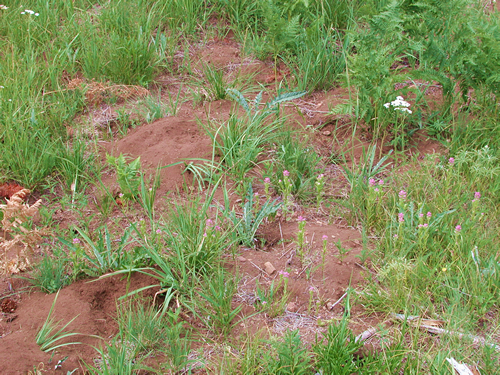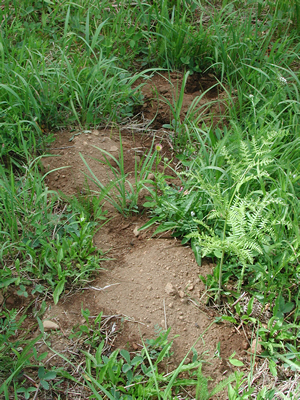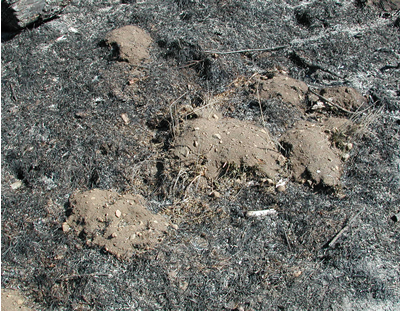|
Soil
disturbances by the western pocket gopher, Thomomys
mazama, are conspicuous features at Bunchgrass Ridge and
in meadows throughout the Cascades. Through their tunneling and
mounding activities, gophers (box, right).
- initiating
succession by removing or burying plants
- reducing
the dominance of grasses and increase the diversity of less competitive
forbs (and the animals and insects that depend on them)
- increasing
the heterogeneity of species composition on mounds and at larger
spatial scales within meadows
- providing
sites for establishment of disturbance-dependent species which
would otherwise be absent.
Most
studies of the relationships between gopher disturbance and plant
community structure have been conducted in low-elevation prairies
or grasslands of central and eastern North America; studies from
higher elevation mountain ecosystems are rare.
At
Bunchgrass Ridge we examined patterns of succession and community
heterogeneity associated with mound formation and aging. We asked
the following questions:
-
How do plant cover and species diversity change as mounds undergo
succession?
-
Does gopher activity shift the relative abundance of grasses
vs. forbs? Does this relationship change as mounds undergo succession?
-
Are communities of species on mounds more heterogeneous (variable)
in composition than those in adjacent meadows? Does this variability
decline as mounds succeed to meadow?
-
Do mounds provide germination sites for species that are absent
from, or uncommon in, undisturbed meadow?
|
| Soil
disturbance by gophers |
 |
| Gopher
activity disturbs the soil, initiating
succession and enhancing plant species diversity. |
|
| Mounds |
Castings |
 |
_Plot%202_Jul%207%202011.jpg) |
| As
fresh mounds age, soil compaction and rain
bring stones to the surface and plant colonization
commences. |
|
| Soil
castings form under winter snowpack. Gophers
move soil into snow tunnels which are then
exposed by spring snowmelt. |
|
|
|
| Jones,
C. C., C. B. Halpern, and J. Niederer. 2008. Plant
succession on gopher mounds in western Cascade meadows: consequences
for species diversity and heterogeneity. American Midland
Naturalist 159:275-286.  |
|
![]()
![]()
![]()
![]()




_Plot%202_Jul%207%202011.jpg)